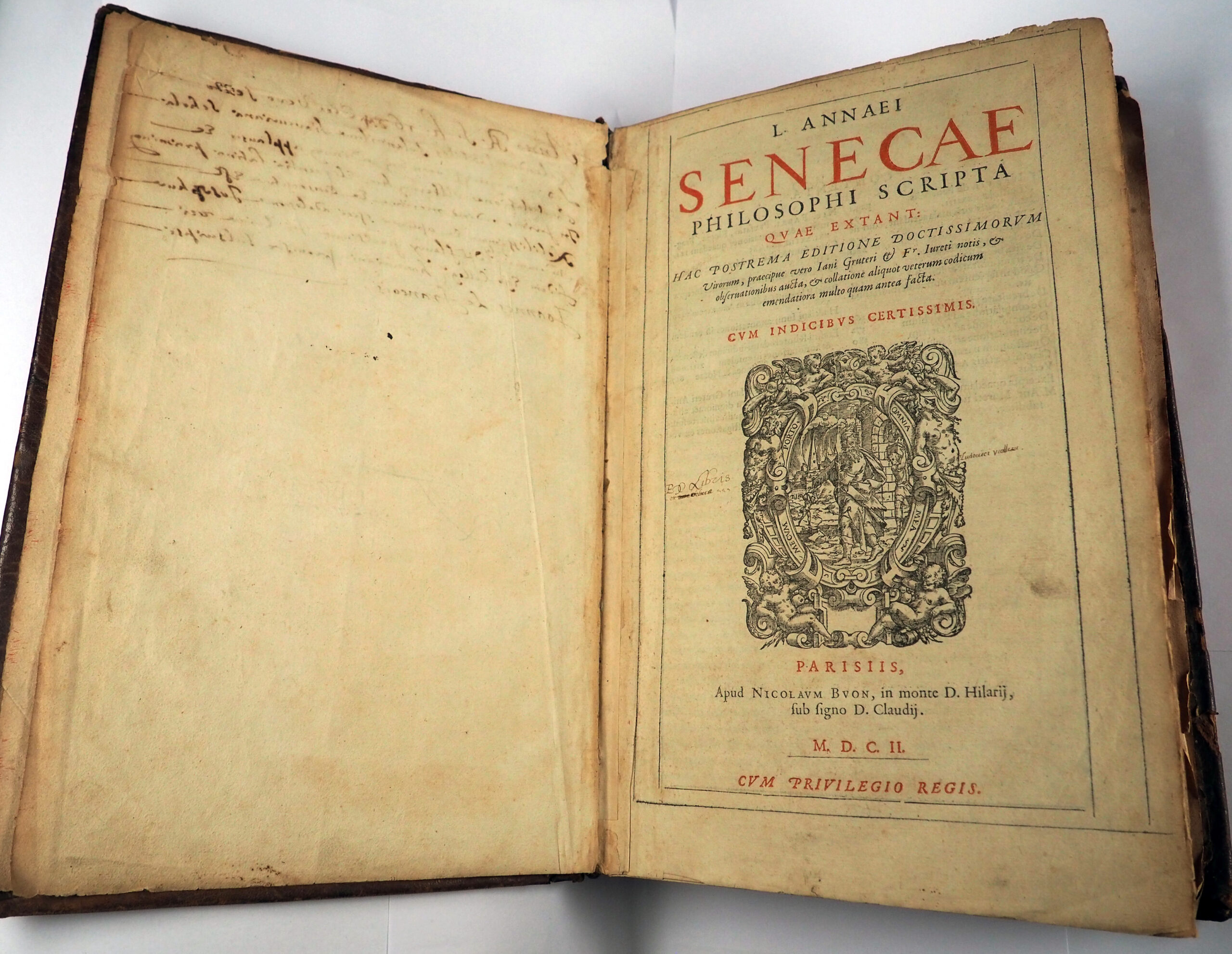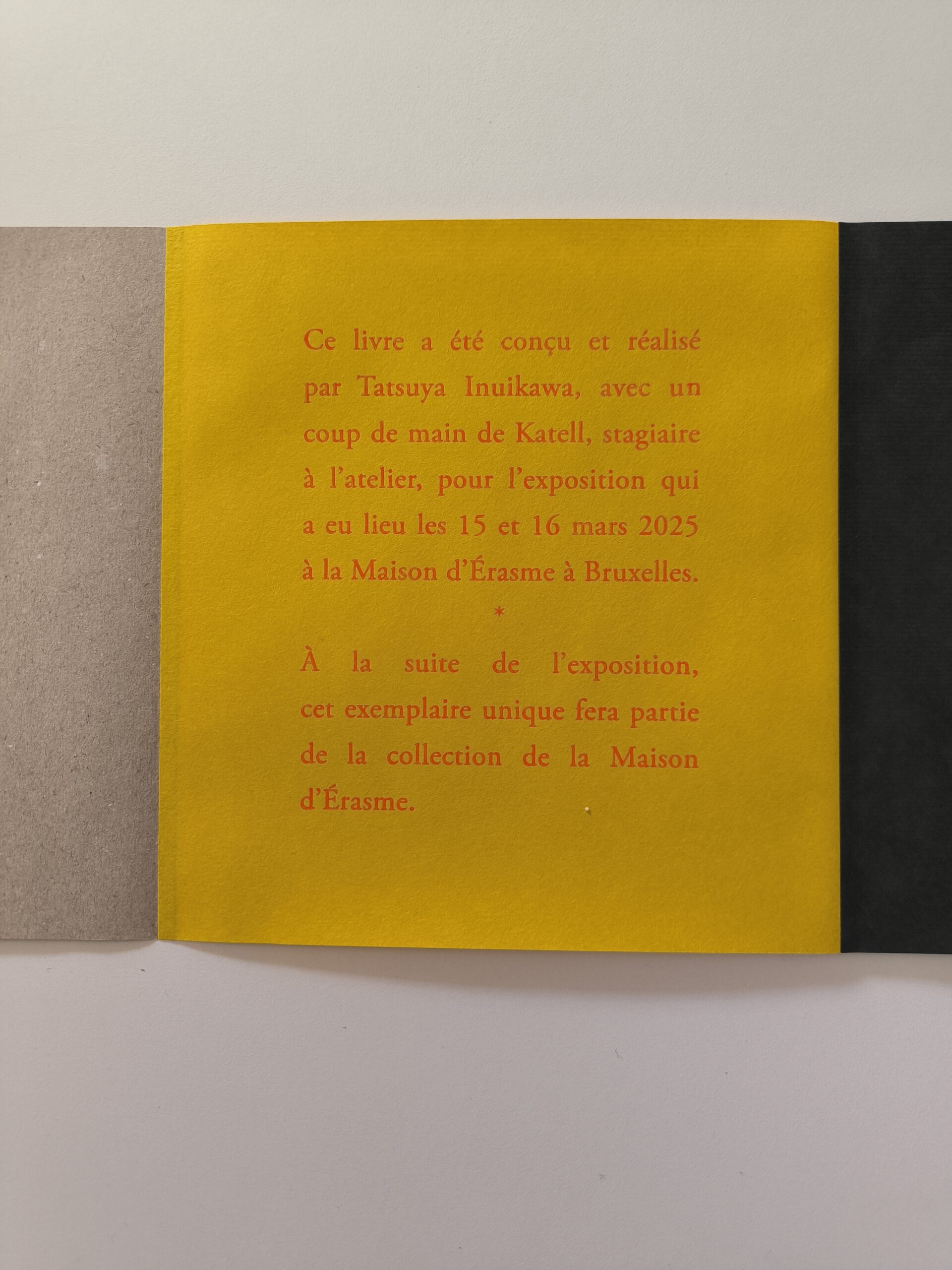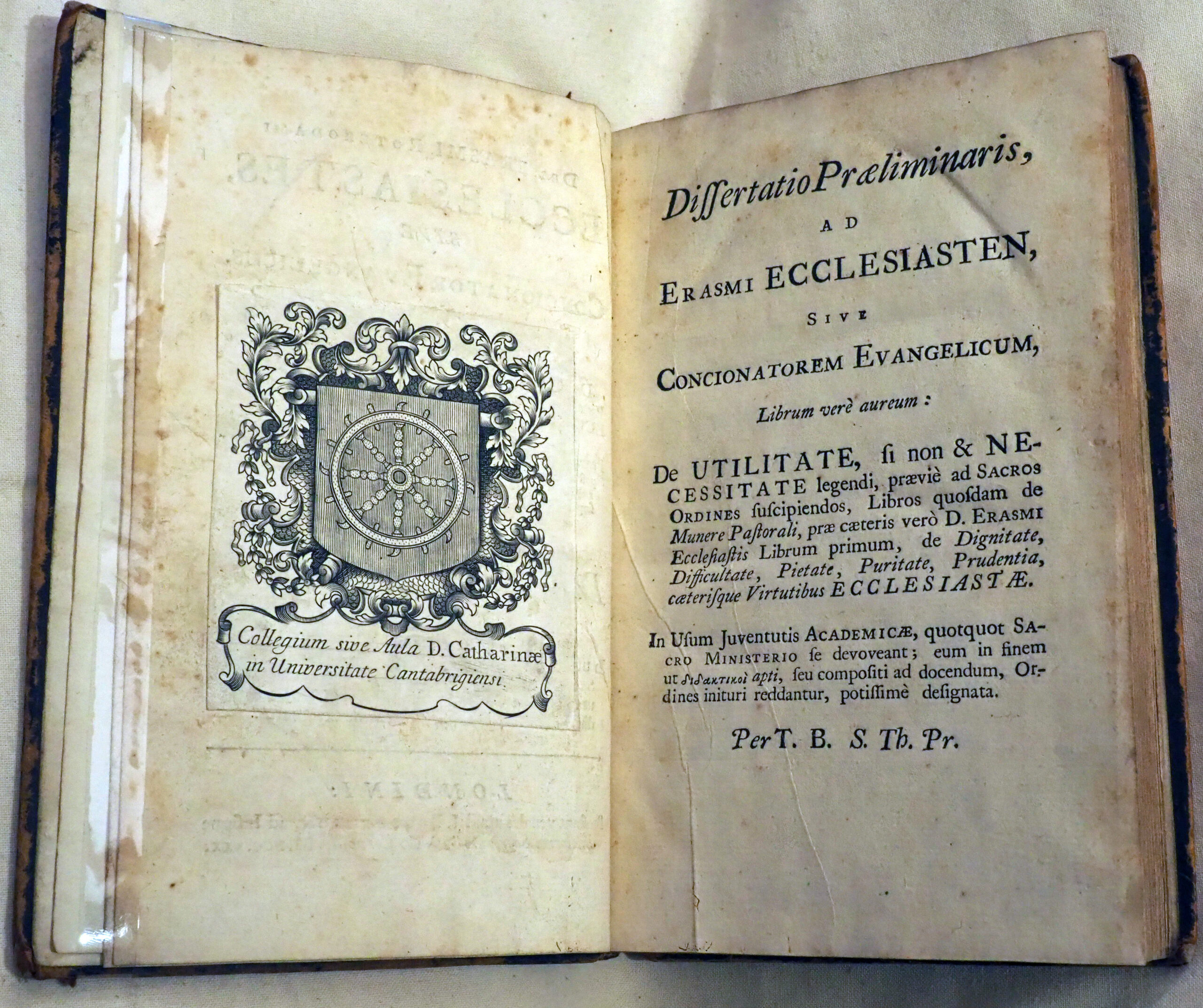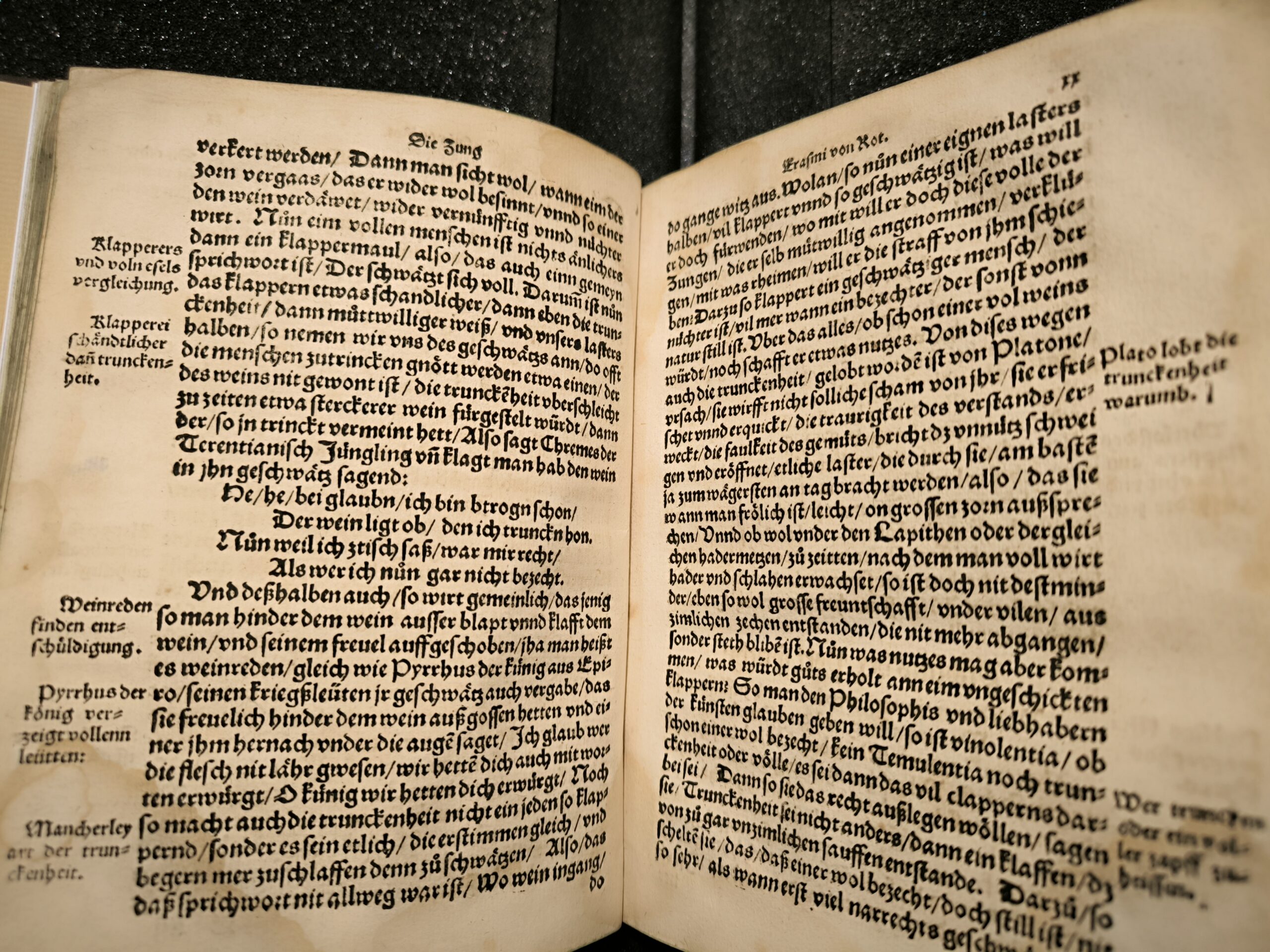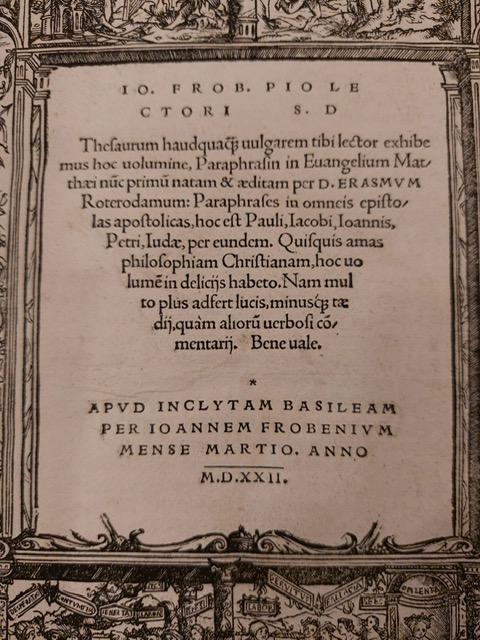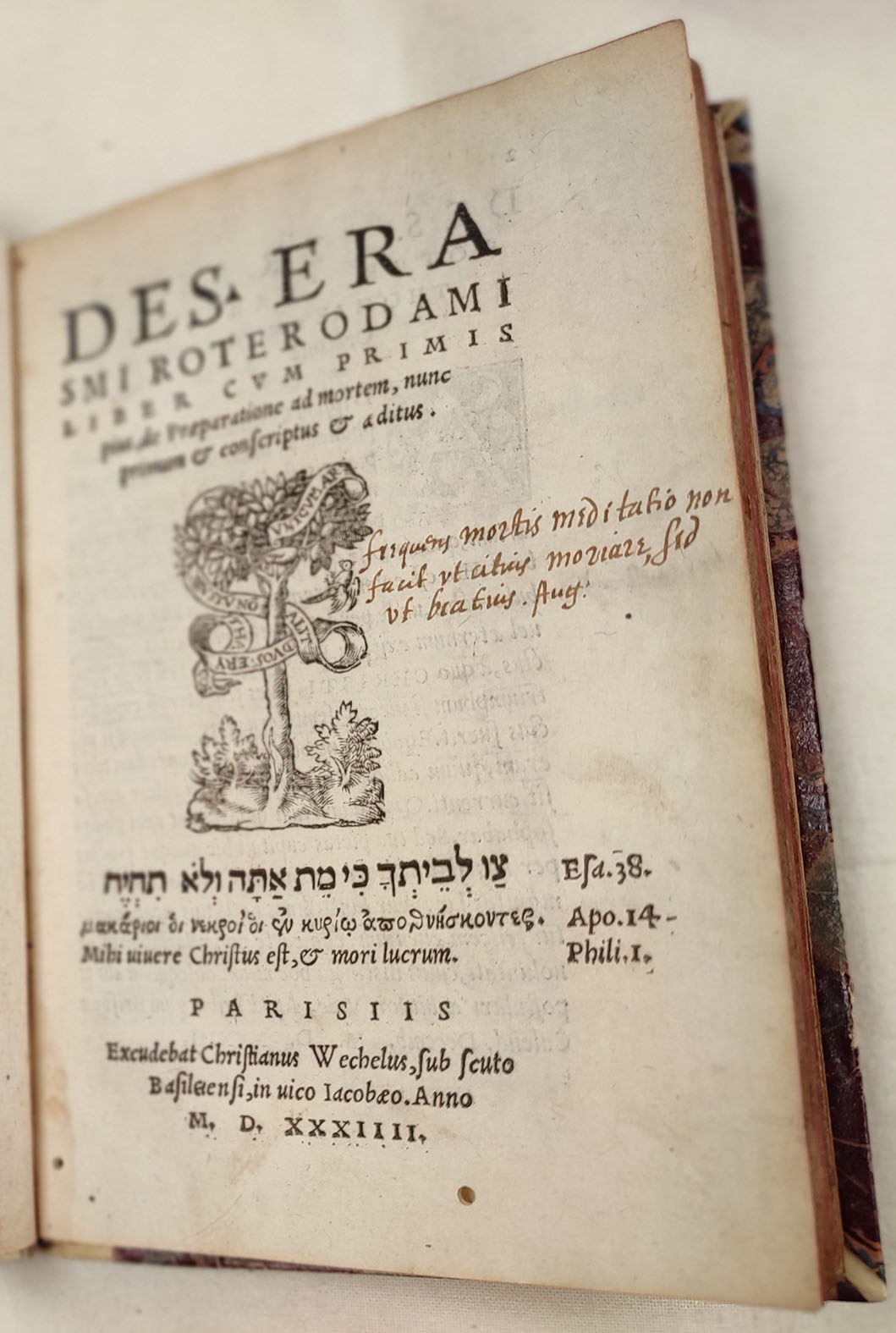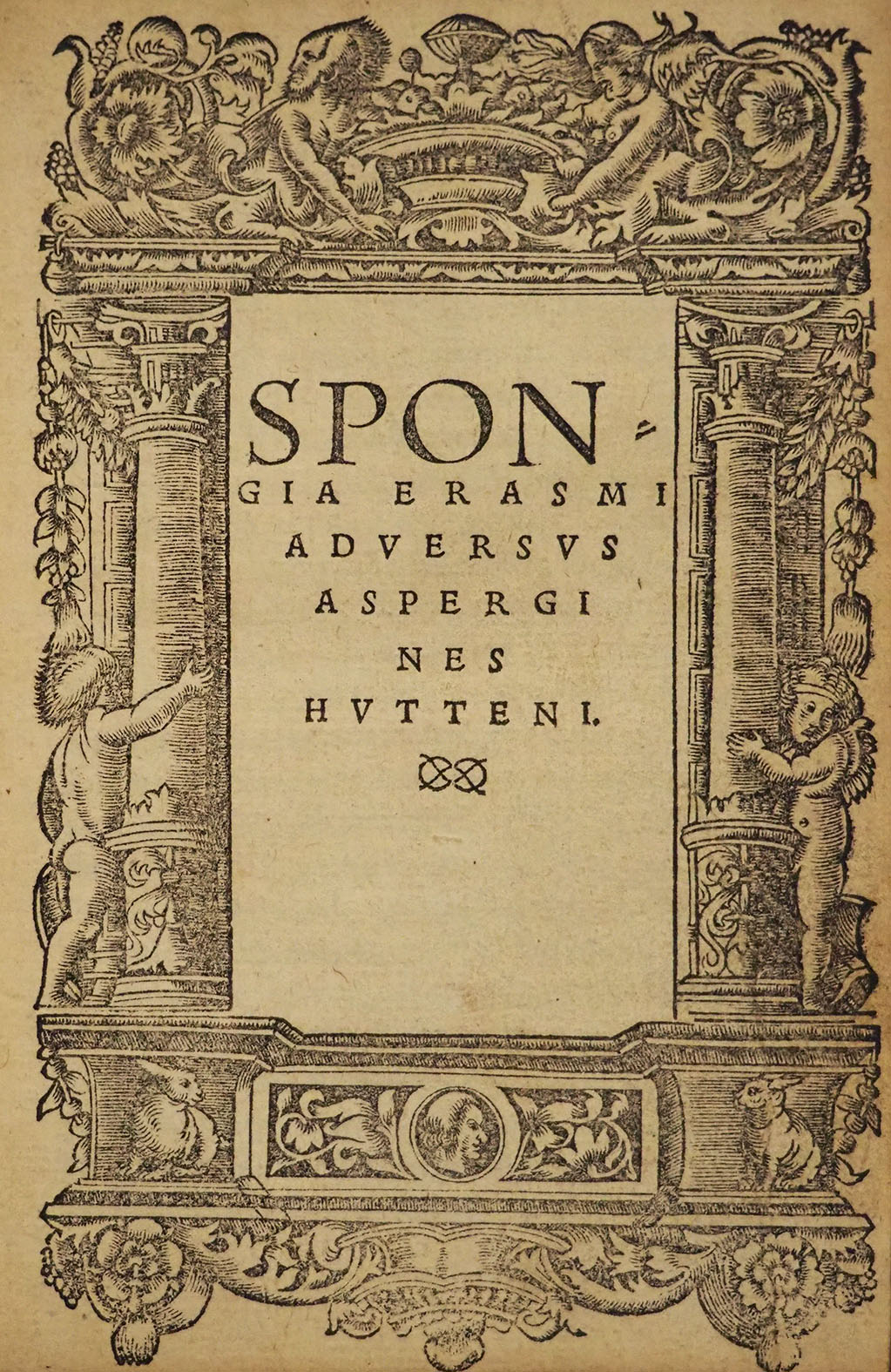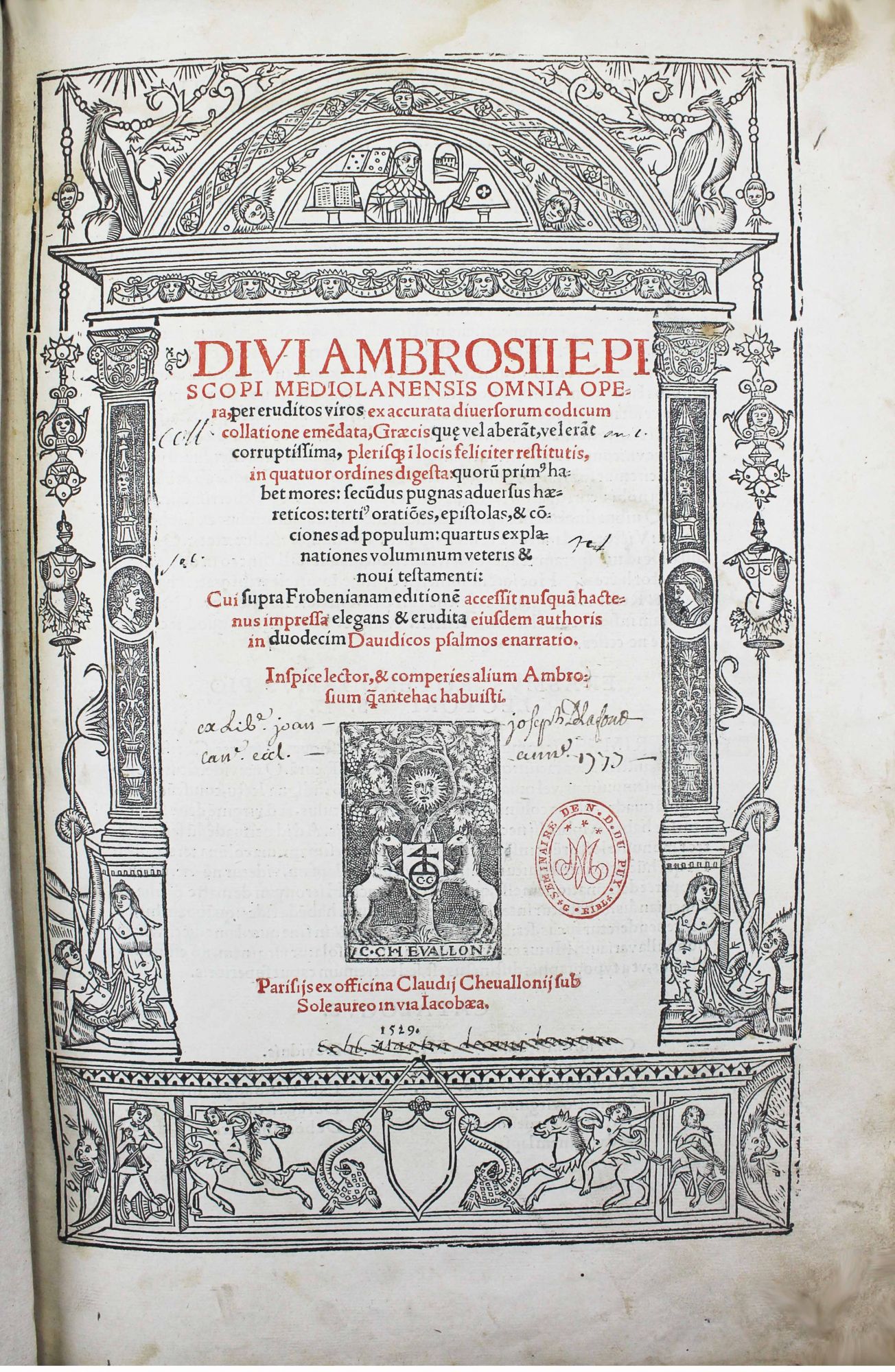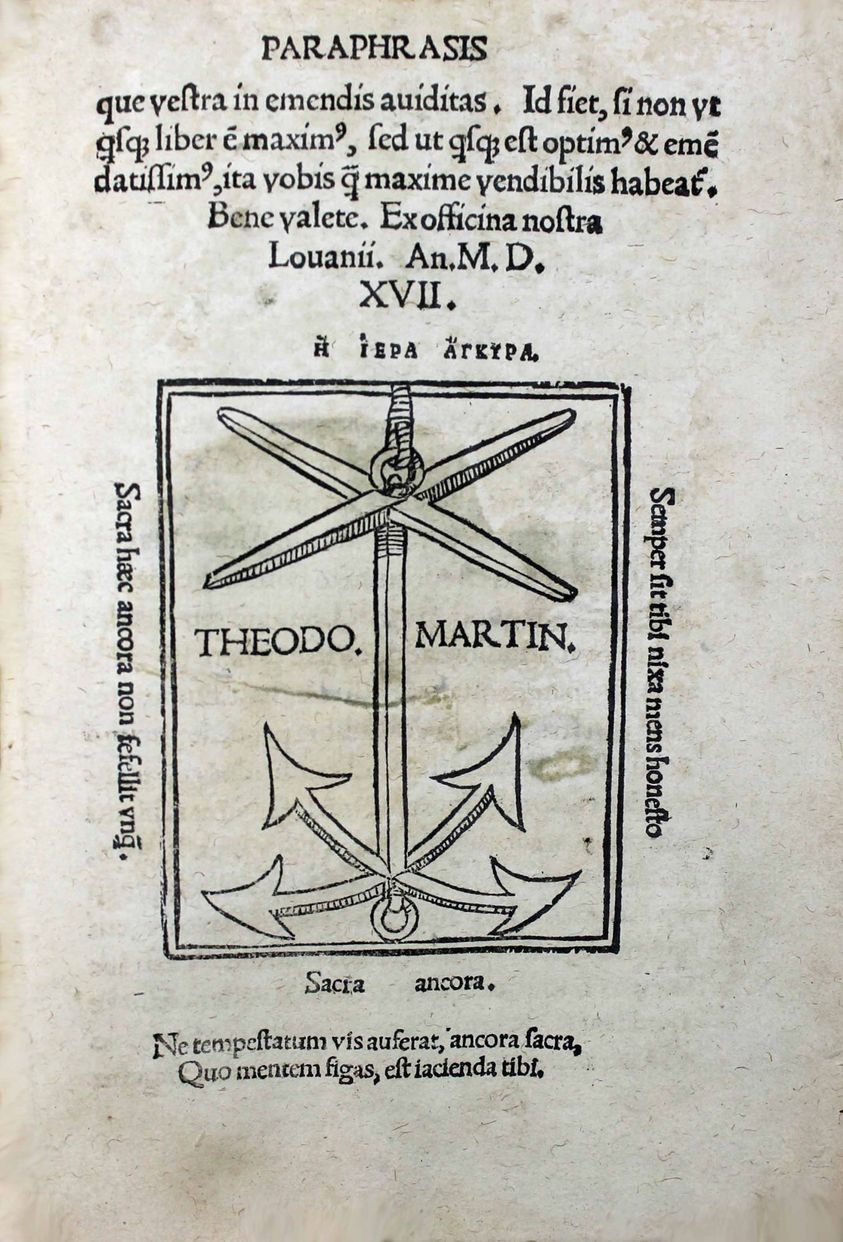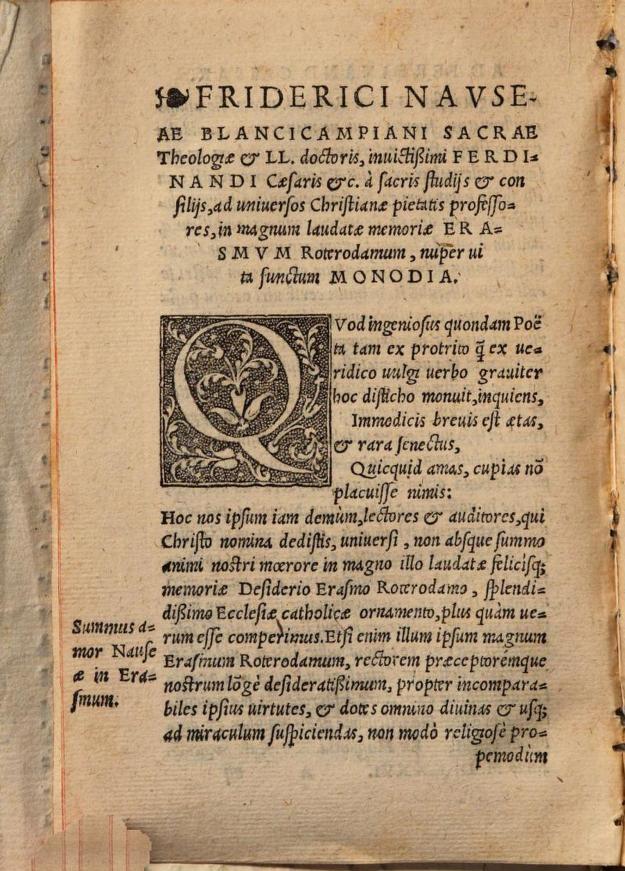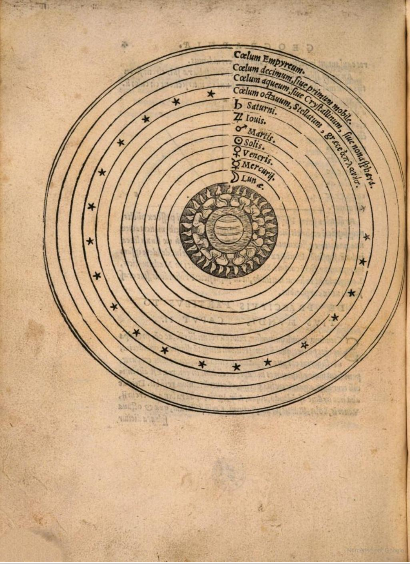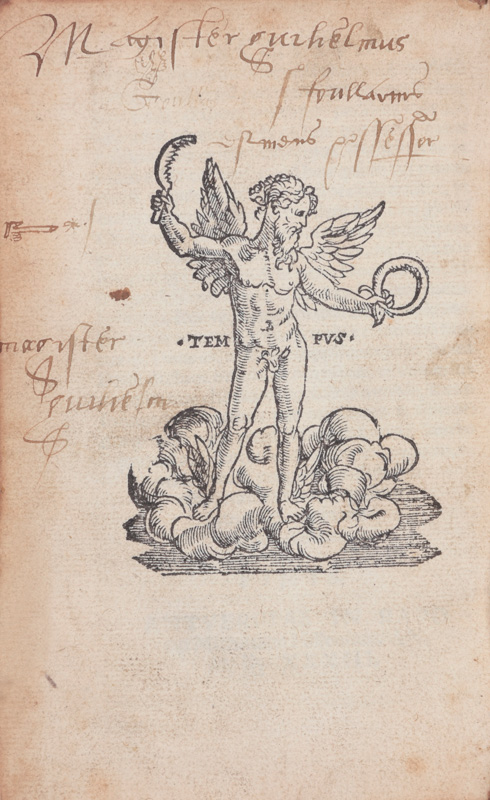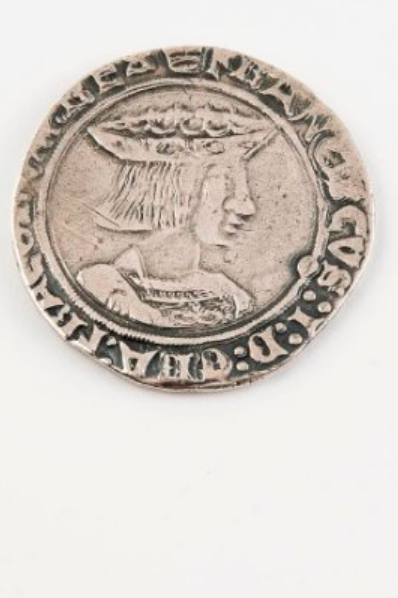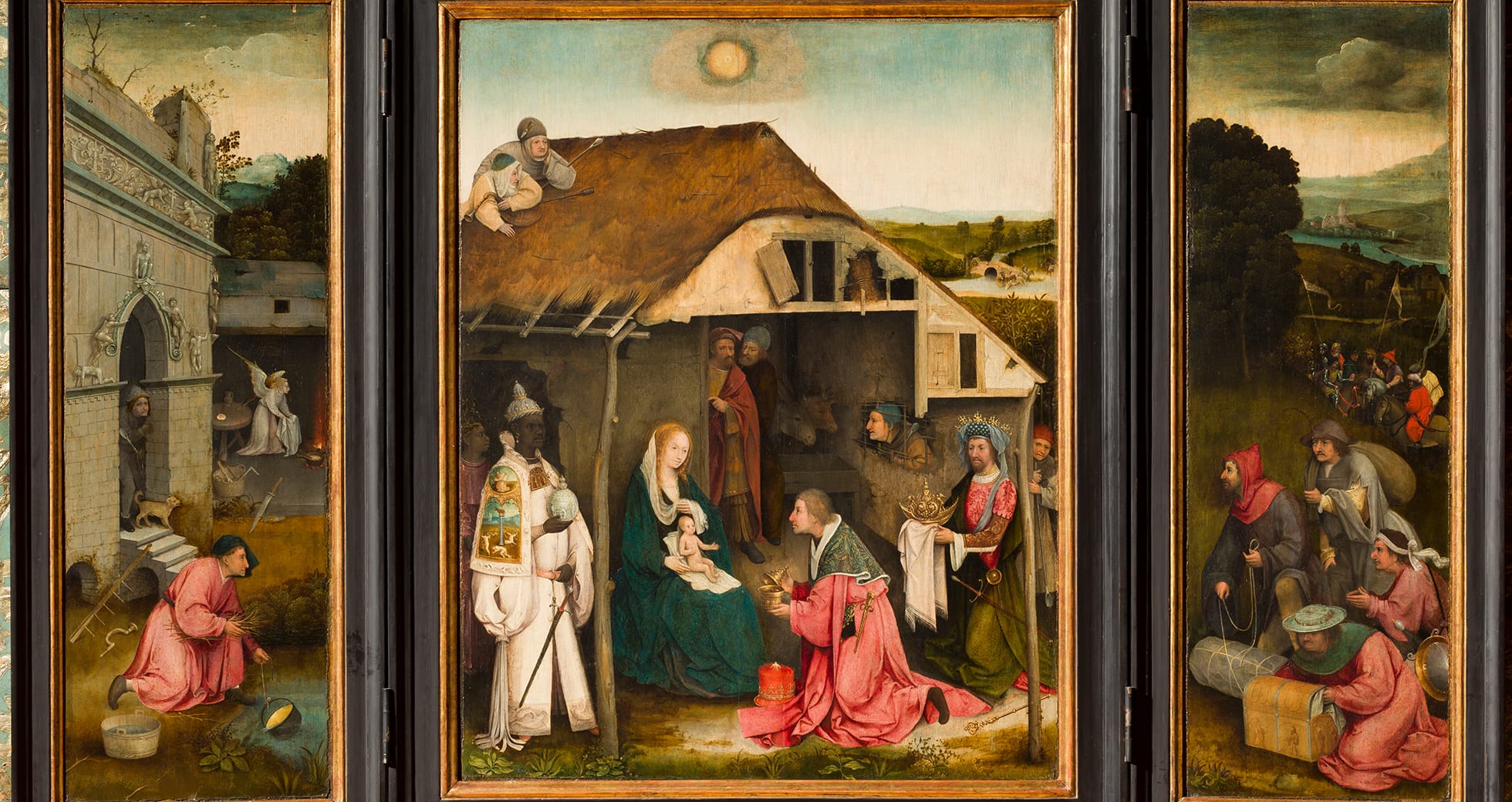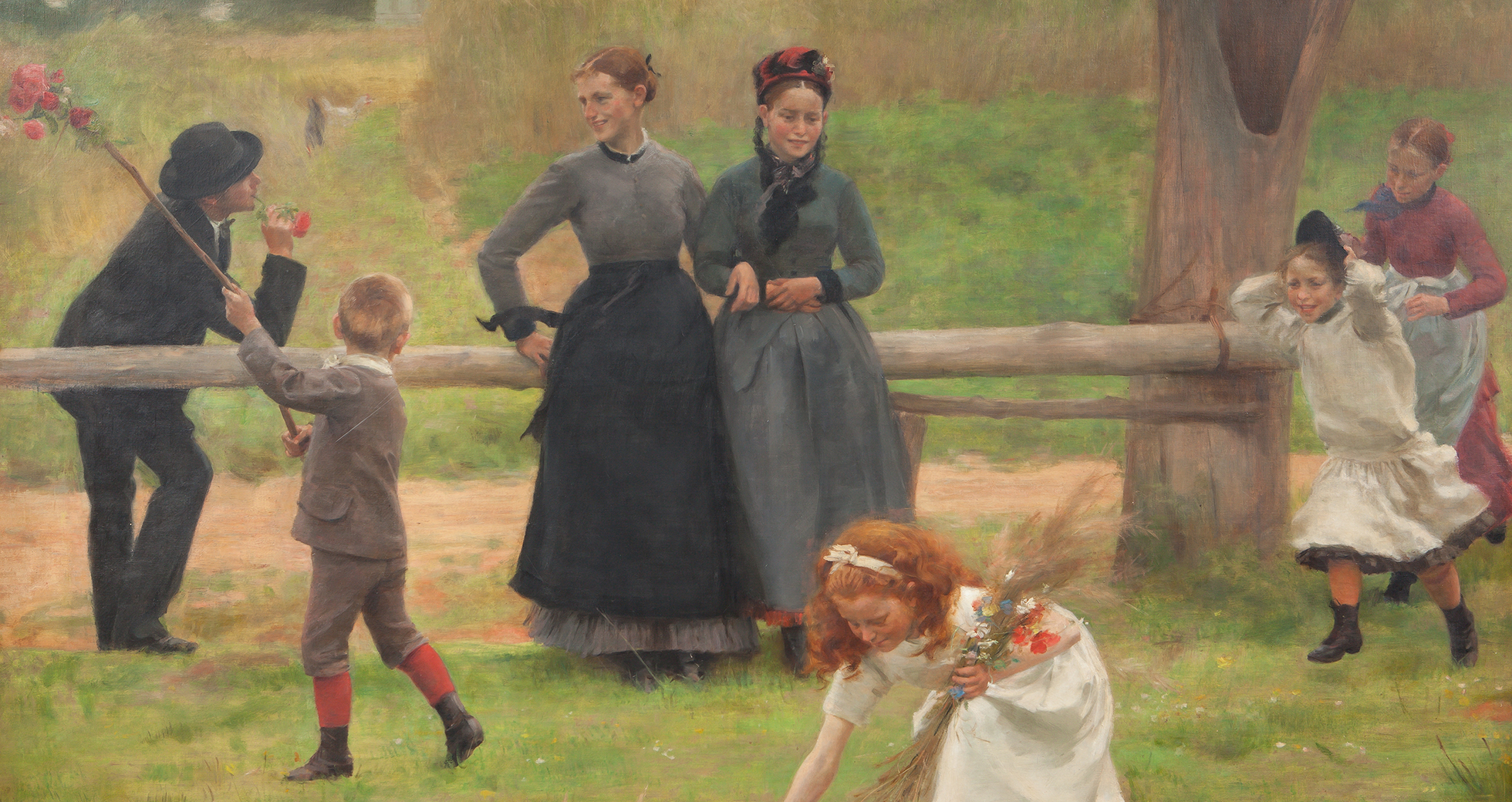Recent acquisitions
Collections
A TREASURY OF IMAGES

Desiderius Erasmus, Parabolae sive similitudines, per Erasmum ex Plutarcho, Seneca & aliis authoribus excerptae […] purgatae & auctae. Lyon, J. Gazeau, 1614.
In 1614, an expurgated version of Erasmus’s Parabolae, or Similitudes was published in Lyon. The Similitudes are a collection of rhetorical figures designed to enrich speech and support argumentation. They are comparisons drawn from natural phenomena. In his preface, Erasmus tells us that he extracted them – like precious stones – “from nature’s secret recesses, from the innermost sanctuaries of knowledge.”
Examples include “Sailing between the rocks” to describe difficult choices, “The fire beneath the ashes” for hidden passions, or “The mirror of the soul” in reference to the conscience. First published in 1514, the Similitudes are a treasury of imagery and expression aimed at students, preachers, orators, and writers. Like the Adages, Erasmus sought to refine his readers’ style, cultivate their taste and critical thinking, and instill Christian values.
They reflect his pedagogical ideal: to think clearly, speak with elegance, and persuade without violence.
Excerpt:
“Just as we do not see storks when they arrive, but only once they are there, and we do not observe their departure but realise it after the fact – for their migrations happen at night and in secret – so too, no one notices when youth departs, only that it has gone; and we do not feel old age approaching, but only see it once it has come.”
(Parabolae, ASD, vol. 1-5, p. 290.)
Acquisition 2025
THE WORKS OF SENECA

Lucius Annaeus Seneca, Scripta quae extant omnia, cum notis Jani Gruteri et Fr. Jureti. Paris, P. Chevalier for N. Buon, February 1602, coll. MEH E 1606.
In 1602, a new edition of Seneca’s complete works was published in Paris, featuring commentaries by Erasmus of Rotterdam. More than a scholarly project, it reflects Erasmus’s ambition to connect ancient philosophy with Christian values.
To Erasmus, Seneca was not just a Stoic thinker, but a true mentor – someone who championed reason, self-restraint, and inner peace. These were, in Erasmus’s eyes, fully compatible with the teachings of the Gospel. By editing Seneca, he offered European readers a moral guide for uncertain times.
This particular copy also tells a story of academic life: in July 1684, it was awarded as a Latin eloquence prize to a senior student at the prestigious Collège d’Harcourt in Paris. A rare and eloquent tribute to two pillars of wisdom: Erasmus and Seneca.
2024 Acquisition
JARDIN

JARDIN, 2024
Tatsuya Inuikawa
21 x 155.1 meters
Acrylic paint, ink, and colored pencils / Print, stencil
The artwork entitled Jardin (“Garden”) by Japanese artist Tatsuya Inuikawa has joined our collection.
Designed as a visual journey, inspired by the museum’s gardens, this 15.51-meter-long work unfolds slowly, revealing a universe of plants, trees, stones, and quotations, created using prints in acrylic paint, ink, and colored pencils.
First presented in March 2025 during a temporary exhibition dedicated to the artist’s book-objects, the work was later reworked and finalized in July 2025.
Tatsuya Inuikawa was born in Japan. He studied bookbinding at La Cambre (Brussels). He has lived and worked in Brussels since 2007, and has been teaching at La Cambre since 2024.
He has created numerous bespoke bindings, combining high quality and creativity. In 2012, he founded his bookbinding studio “La Rivière Sèche”, where each creation is the result of careful reflection on the volumes and spatial qualities of the book, which unfolds in an organic manner.
Mastering both traditional and modern bookbinding techniques, he has designed works in a variety of contexts, in collaboration with artists, graphic designers, bibliophiles, and collectors.
His craftsmanship, combined with his experience, enables him to meet the most demanding aesthetic and technical standards. During this presentation, you will have the opportunity to discover a new artwork.
2025 Acquisition
AN ART OF PREACHING

Desiderius Erasmus, Ecclesiastes, sive Concionator Evangelicus. Liber primus. De Dignitate, Difficultate, Pietate, Puritate, Prudentia caeterisque virtutibus Ecclesiastae, Londres, J. Brotherton, 1730, coll. MEH E 1605.
Ecclesiastes (1535) is one of Erasmus’s most ambitious works — and yet one of the least known.
This treatise is addressed to preachers and presents a true theory of Christian eloquence. Erasmus weaves together Gospel exegesis, humanist learning, and pastoral care. For him, preaching is not about enforcing dogma but awakening consciences, stirring hearts, and encouraging inner reform. Faithful to his ideal, he puts speech at the service of peace, discernment, and enlightened faith.
Despite its biblical title, Ecclesiastes is not a commentary on the Book of Qoheleth, but an original work, rich in scholarship and experience, reflecting the spiritual challenges of his time.
Nearly two centuries later, the work experienced a revival: the recently acquired edition, printed in London in 1730, bears witness to that renewed interest. At the time, the Anglican Church was grappling with the rise of Methodism — an Evangelical revival movement known for its passionate, emotional preaching. While some embraced this new fervour, others criticized its excesses. Rediscovering Erasmus then meant reclaiming a tradition of preaching grounded in reason, balance, and spiritual depth — a measured alternative to Methodist zeal.
2024 Acquisition
THE LANGUAGE, A DEADLY POISON AND A SALUTARY DRUG

Desiderius Erasmus, Von der Zung (German translation of De Lingua), [Strasbourg, Balthasar Beck, 1544].
‘I have often regretted having spoken, but never having kept silent’[1].
In August 1525, Erasmus published his treatise De Lingua in Latin, an exposé of all the abuses of speech: denigration, denunciation, lies, etc. He also denounced smooth talkers, empty words and idle chatter.
He evokes the purity of silence, the benefits of brevity and moderation.
The work has an almost biographical flair. Erasmus, torn between his reformist ideas and his loyalty to the Church of Rome, was criticised from all sides, by representatives of both camps. The attacks became personal: rumours and slander made his life bitter and darkened his mood.
This slightly disjointed work, which seems to have been written in one go in the heat of the moment, is a pleasure to read. It contains amusing anecdotes and sound advice, such as ‘what we can do in a few words to be hurt as little as possible by the venom or indiscretion of others’.
This is the German translation, published by the Strasbourg printer Balthasar Beck in 1544, eight years after Erasmus’ death. This edition bears witness to the reading of Erasmus’ texts in Protestant circles: the work was reprinted two years later by the same printer. Balthasar Beck also published didactic works for schools, as well as texts by reformers such as Luther and Melanchthon.
Acquisition 2024
[1] Attributed to Xenocrates, cited by Erasmus in De Lingua
ERASMUS’ BIBLICAL PARAPHRASES

Desiderius Erasmus, Paraphrasis in Evangelium Matthaei & Paraphrasis in epistolas apostolorum, Basel, Johann Froben, 1522, in-folio.
A very beautiful edition of Erasmus’ biblical paraphrases has been donated to the Erasmus House. It is a rewriting of the texts of the Bible (in this case, in Latin) to clarify the obscure passages.
Erasmus’ undertaking was nothing unusual: biblical paraphrases were a widely practiced literary genre in the 16th century. However, this humanist desire to make the sacred texts clear and accessible did not please the theologians of the Sorbonne. Thus, there was an almost institutional rivalry between the biblical paraphrase and scholastic exegesis.
The beautiful folio volume contains the editio princeps (the first edition) of the paraphrase of the Gospel of Matthew, published by Froben in 1522, bound with a reissue of the paraphrased epistles of Paul, Peter, Jude, James, and John.
2024 acquisition
PREPARING FOR DEATH

Desiderius Erasmus, De praeparatione ad mortem, Paris, Chr. Wechel, 1534, in-8°.
“For the wordes of theym that we are wōt to be snatched vp somdele gre∣dyly, and to be printed more depely in the myndes of the hearers, partly that no man is thought to fayne in that ieopardy, partly that the mynd whā it beginneth to be pluc∣ked from the body, wherwith it is combred, oftentymes vttereth a glymmerynge, and a profe of that lybertie and knowlege, wher∣vnto it goth.”
(The words of the dying are wont to be snatched up greedily and are printed more deeply in the minds of the hearers, partly because it is thought that no-one feints in that final moment and partly because the mind that begins to be plucked from the body with which it is encumbered often utters a glimmer and a proof of the liberty and knowledge toward which it goes.)*
This small volume, which is one of Erasmus’s last texts, attests to a time when death was not taboo. On the contrary, people spoke about it and prepared for it, both materially and spiritually. So, Erasmus’s text is part and parcel of the very deeply-rooted mediaeval tradition of “dying a good death” as codified in the 15th century Latin texts Ars moriendi (The Art of Dying). As a good pastor, Erasmus encouraged his readers to detach themselves from earthly goods (wealth, youth, health, etc.) so as to welcome eternal rest serenely, with their gazes fixed upon Christ.
As the text advances, Erasmus adds a few more personal considerations here and there. He believes that, in the absence of a priest, the dying may confess to God directly, without an intermediary. Farther on, he ridicules a woman “of noble birth and of high prudence” who bequeathed a large sum of money to a priest to go say masses for her in Rome, “as though the masses at Rome were of more holynes than the masses of Englande”*! He warns against calling too many physicians to an ill person’s bedside, for their rivalry often causes the patient’s death, as each one tries to demonstrate the extent of his knowledge, to the peril of the very patient.
The work was published by Froben in Basel in late December 1533 and was an immediate hit, as attested by this 1534 Paris edition and a score of re-editions that were published in Cologne, Paris, Krakow, Antwerp and Lyons before 1440.
Reference for the quotes: Erasmus, Desiderius, Preparation to deathe A booke as deuout as eloquent, compiled by Erasmus Roterodame, Londini: In aedibus Thomae Bertheleti regii impressoris. excus., 1538, unnumbered pages.
* Free translation into modern English.
2023 acquisition
THE BOY BISHOP

Desiderius Erasmus, Concio de puero Iesu, Cologne, Eucharius Cervicornus, April 1525, in-8°.
In Concio de puero Iesu or Sermon of the child Jesus, a child preaches like a priest. This work is connected to a mediaeval tradition still current in the 16th century, namely, the tradition of the Boy Bishop. Each year on Saint Nicholas’s Day (6 December), the Roman Catholic cathedral choirboys elected one of them to be bishop. He was dressed in a replica bishop’s robe, with staff and ring, whilst the other boys, wearing priests’ habits, took possession of the church and led all the ecclesiastic processions and ceremonies save mass. This power reversal lasted until the Feast of the Holy Innocents (Childermas or Innocents’ Day), 28 December.
Erasmus wrote this sermon in 1511, at the request of his friend, John Colet, dean of Saint Paul’s Cathedral in London. The sermon was supposed to be read aloud by a Boy Bishop to inaugurate the new St Paul’s Cathedral School.
This tradition existed in France as well, albeit in a more extravagant, carnivalesque form. Erasmus’s sermon, however, is no piece of buffoonery. It is a sincerely pious work: “...[M]ay my speech have his flavour, reflect and breathe Him who is the word of the Father, who alone possesses the words of life, whose dynamic effective speech cuts more deeply than the double-edged word to reach the deepest hidden recesses of the heart…”
2022 acquisition
SPONGE

Desiderius Erasmus, Spongia Erasmi adversus aspergines hutteni, Cologne?, Hero Fuchs?, 1523, in-8°.p
Sponge to wash away Hutten’s splashes: With this somewhat strange title Erasmus responded to his adversary Ulrich von Hutten’s Expostulation, reducing Hutten’s objections to ordinary splashes. A generation separated young von Hutten, 26 at the time, and the Prince of Humanists, who was twenty years older. And yet, before their relationship foundered, the two men had been friends. Both were passionate lovers of the classics and driven by the same desire to reform the Church.
We are overjoyed to have acquired a copy of this work for our library, as we had as yet no old edition of it in our holdings. This edition, which contains neither date nor place of publication, was probably published the same year as the princeps edition (Basel, Froben, summer 1523). The title page is inspired – with a few modifications – by a border designed by Holbein (see Frank Hieronymus, Oberrheinische Buchillustration, p. 607, No. 3).
An English translation of the two texts exists in book format and online: Polemics of Erasmus of Rotterdam and Ulrich von Hutten, Translation of Expostulation cum Erasmo, by U. v. Hutten, and of Spongia Erasmi adversus aspergines Hutteni, by Erasmus, Randolph J. Klawiter, (Ann Arbor, Michigan: University of Notre Dame Press), 1977. And there is good news for those wishing to discover this epic piece of humanist literature in French, with the recent Ulrich von Hutten, Sommation, suivie de Érasme, Éponge à laver les éclaboussures de Hutten et de Othon Brunfels, Réponses à Érasme. Translated by Danielle Sonnier, Paris, Les Belles Lettres, 2019, “Le miroir des humanistes” Collection, 19.
2022 acquisition
THE COMPLETE WORKS OF SAINT AMBROSE OF MILAN

Sanctus Ambrosius, Desiderius Erasmus (Ed.), Divi Ambrosii Episcopi Mediolanensis omnia opera, per eruditos viros ex accurata diuersorum codicum collatione emendata (…), Paris, Claude Chevallon, 1529, in-folio.
This imposing volume is a compendium of the complete works of Saint Ambrose of Milan, one of the Fathers of the Western Church, who lived in the 4th century CE. This Paris edition follows the text of the princeps, published by Froben in Basel in 1527.
Erasmus edited and published, with his erudite colleagues, the writings of no fewer than twelve Church Fathers, including Jerome (1516), Ambrose (1527), Augustine (1527-1529), and Origen (1536). These editions gave access to holy knowledge, for the Church Fathers helped to understand and interpret the Bible, shaped the ecclesiastic traditions of the first centuries of the Christian Church, and also personally incarnated the ideals of a responsible Christian life.
Erasmus’s philological work on these ancient texts was not limited to restoring them in their purest form. Erasmus and the Humanists of his time revealed the topicality of the texts that they gave their readers. They guided the reader’s interpretations by underlining the ideas that they deemed to be the most important. What is more, in assessing the authenticity of many dubious texts, they promoted a critical attitude towards ecclesiastic tradition.
2022 acquisition
ORTELIUS’S WORLD MAP

Abraham Ortelius, Theatrum orbis terrarum, 1579
34 x 49.5 cm
Coll. MEH 673
This engraving comes from Abraham Ortelius’s Theatrum orbis terrarum (Theatre of the Orb of the World), the first editions of which were published in Antwerp. This work is considered by cartographers to be the first modern atlas. It was first published on 20 May 1570 in Antwerp. Thereafter, the author regularly revised and augmented the atlas in a series of later editions until his death in 1598.
The Theatrum, which was dedicated to King Philip II of Spain, contains a total of fifty-three maps. To produce this world map, Ortelius drew upon Mercator’s map of 1569, Giacomo Gastaldi’s map of 1561, and Diego Gutierrez’s 1562 portolan chart of the Atlantic coast.
Coloured by hand.
2021 acquisition
PARAPHRASIS

Desiderius Erasmus, In epistolam Pauli apostoli ad Romanos paraphrasis, Leuven, Dirk Martens, 1517, in-8°, MEH E1598.
The work retains its original binding. Printed in large Roman characters. With the double anchor cachet of the printer Thierry Martens.
This edition from Louvain, where Erasmus was living at the time, was of particular importance in the context of the Protestant Reformation.
On 31st October, 1517, Luther posted his 95 theses on the door of Wittenberg church, and by so doing, set in motion the basis of Protestantism.
At the back of the book is a message from Martens to the reader: “We are trying, with our meagre means and through our modest print house, to help Louvain Academy, which flourishes thanks to the wide-ranging studies it provides; and we are endeavouring, with the utmost care, to only offer you books possessing a dual advantage, firstly being both moral and instructive and secondly, printed as accurately as possible. Those, who motivated by greed, publish books riddled with errors are blameworthy on two accounts, first towards authors whose works they spoil and vilify and then towards readers, who, instead of a book, find only a cross and torment beside them.”
2020 acquisition
IN MEMORIAM ERASMI

Friedrich Nausea, In magnum illum laudatae felicisque memoriae Erasmum Roterodamum, nuper vita functum Monodia. Eiusdem uita ex Beati Rhenani Epistola ad Archiepiscopum Coloniensem, Paris, Chrestien Wechel, 1536, in-8°, MEH E1586.
A reverent “In memoriam” composed for Erasmus by his friend Friedrich Nausea (1496-1552), Bishop of Vienna. In this text, Nausea credits Erasmus with a divine mission and compares him to Christ. The book also contains the celebrated biography of Erasmus by Beatus Rhenanus (1485-1547), written in the form of a letter (Allen 3139).
This first Parisian edition (issued after the Cologne edition, which had appeared a few months earlier) is very rare. Our volume belonged to Étienne Baluze (1630-1718), a philologist, French lawyer and celebrated librarian of Colbert, the Minister of Louis XIV.
2019 acquisition
GEOGRAPHY

Henricus Glareanus, De Geographia liber unus, Basel, Johann Faber Emmeus, 1528, in-4°, MEH E1591.
Glareanus, real name Heinrich Loris, was a Swiss humanist (1488-1563). A man of many talents, he was by turns mathematician, geographer, musician, musical theorist, historian, philologist and poet. A friend of Erasmus and Myconius, he was sketched by the Holbein brothers in their illustrations in the margins of Erasmus’s “In Praise of Folly”. This geographical and mathematical treatise includes some chapters on the construction of globes and these remained a benchmark on the subject until the XVIIth century. He mentions America and “Amerigus Vesputius”, in his final chapter “De regionibus extra Ptolemaeum”.
Erasmus himself was interested in geography: he played an active role, in the last years of his life, in the production of the editio princeps of Ptolemy’s original Greek text on geography.
2019 acquisition
FOR CHRISTIAN UNITY

Desiderius Erasmus, Liber de sarcienda Ecclesiae concordia, Antwerpen, Michael Hillen, 1533, in-8°, MEH E1584.
A rare Antwerp edition, printed the same year as the editio princeps (Basel, Froben & Episcopius) of Erasmus’s plea for reconciliation in the heart of the Christian Church.
2019 acquisition
PAYING HIM BACK IN HIS OWN COIN

Silver testoon with the effigy of King Francis I (1515-1547)
First half of the XVIth century
Silver
France, Limoges
Testoons were French silver coins, depicting the effigy of the sovereign. The Sforza family, in Milan (around 1450), came up with the idea of depicting the portrait of the sovereign on coinage, thereby re-establishing the custom initiated in ancient Rome. When he became Duke of Milan in 1504, Louis XII re-adopted this custom for French coinage.
2019 acquisition




